Friends of AHBIC
If you aren’t already a Friend of AHBIC, we welcome you to join our group of organisations and individuals who are supporting Australia’s national beekeeping industry that supports you.

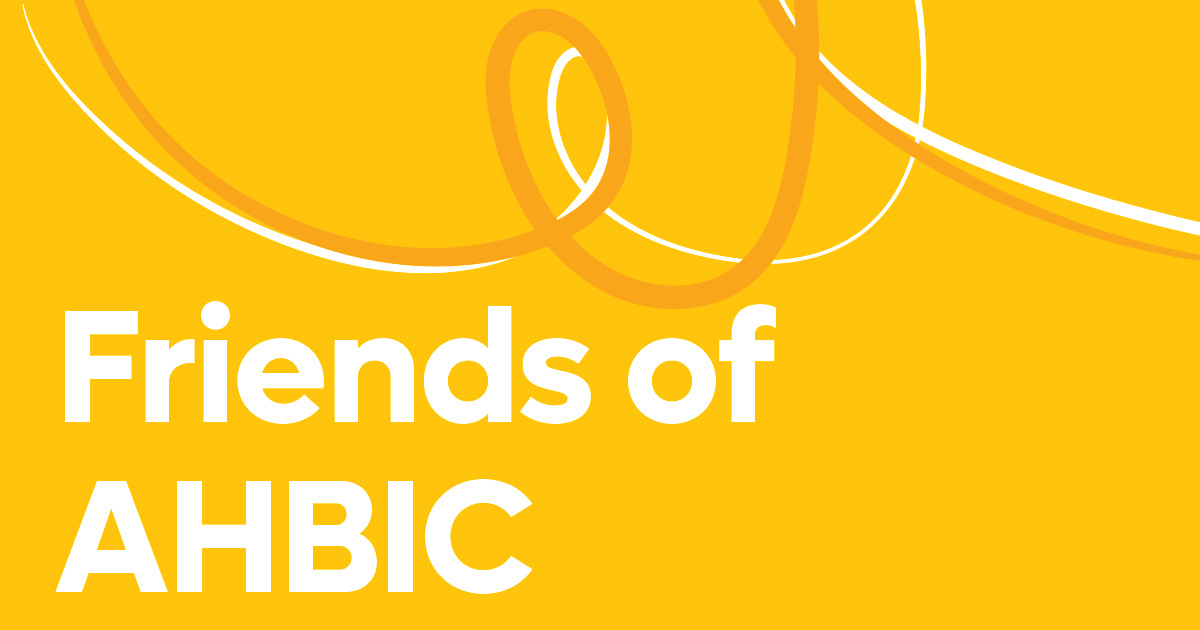
If you aren’t already a Friend of AHBIC, we welcome you to join our group of organisations and individuals who are supporting Australia’s national beekeeping industry that supports you.

On the 5th of July AHBIC held its AGM in Adelaide, the day after the South Australian conference. The day was started with a presentation and interactive workshop by AgriFutures to assist in creating their next strategic plan. I urge all levy payers to contribute to creating their strategic plan by filling out this survey: Feedback on AgriFutures Australia’s performance
The AGM was a successful day and was well represented by delegates from AHBIC’s member bodies and we had a good number of observers. Coming along as an observer is a great way to learn more about how AHBIC works and the outcomes that it achieves. Come along next year!
The day was comprised of several business items including, Biosecurity update, National Bee Pest Surveillance Program information, imported honey subcommittee update, levies review and motions were put forward to discuss, thank you Tasmania!
An important point to note, AHBIC had 11 subcommittees, many of which had completed their set tasks or were inactive. Each subcommittee requires a degree of effort to keep them active including administrative support. It is important to use AHBIC’s limited resources for the most effective outcomes. It was discussed and delegates voted that 9 subcommittees be closed except for two committees; the Levies and Imported honey. Delegates voted to close Education, Resources, Biosecurity, Events, Congress, Queen bee & Drone Semen Importation, AHBIC branding Review, Food Safety and National Field Day.
That said, if there is a real need for a new subcommittee, one can be set up if required. Please contact me with a paper that can be presented to the executive for discussion.
Next year’s AHBIC AGM will be held in Tasmania, dates and location is to be advised by the Tasmanian Beekeepers Association Executive.
Stephen Targett joined AHBIC as Chair in June 2022—just ten days before the detection of varroa in New South Wales. Great timing Stephen! The previous three years have been the most challenging period, not only for beekeepers but for AHBIC itself.
Despite the challenges during the response, Stephen held the team together. On many occasions, there were hot heads, (me included!), Stephen with his experience and maturity, saw reason and defused the situations. I personally have learnt a lot from Stephen.
Stephen has left AHBIC in a better position and has coached the next generation to continue his work. Prior to joining AHBIC, Stephen had sold his bee business, he held the Chair position simply to give back to the industry.
Thankyou Stephen for giving your time to our industry.
Therese Kershaw dedicated six years on to the AHBIC executive. Once again, during a very tough period. During her time on the executive, Therese identified and encouraged new people to join the AHBIC executive.
Therese selflessly gave hours of her time to the organisation and helping implement several successful events. Thereses knowledge and passion for the industry has immensely benefited the honeybee industry, she will be missed in the team.
Thankyou Therese for giving your time to our industry.
Our new executive comprises of Myself as Chair, Lindsay Callaway as Deputy Chair, Dr Ben McKee, Dr Cooper Schouten and incoming, Dr Dianna Leemon and Ben Hooper.
Di with her research and academic ability, Ben with his beekeeping knowledge and business skills will prove to be very valuable to the organisation. We Welcome Di and Ben to the team and look forward to working with you.
The Levy review subcommittee has been hard at work for quite some time now, Chaired by Peter McDonald. The committee has done a fantastic job reviewing and making recommendations to the AHBIC executive.
Why do we need to review and or change the levies? Simply put, industries existing levy funded programs, being;
are simply running low on money, they are all essential programs for our industry.
A proposed section in the new levy is for marketing Australian honey. Historically our industry has not invested in marketing our beautiful product, perhaps it is time?
AHBIC is responsible for consulting with industry about these proposed changes. Our CEO, Danny has presented at all member body conferences on the proposal. Danny did not receive negative feedback from the audiences, a reflection that the proposal is on the right track. Much more consultation on the proposal is scheduled in the coming months, so please take notice, be subscribed to our newsletter and be sure to express your view. The levy review process is complex and communicating each step until it is completed will be the focus for our CEO’s activities.
As hives emerge from winter, there has been both good news and bad news. Operators that have not treated for Varroa correctly are seeing the consequences, while those that have, are reporting no issues. This sentiment will remain true moving forward, committed operators will prosper and this provides reassurance to states not yet with Varroa that it is not the end of the world.
Thank you to the industry in your support towards AHBIC and myself chairing the organisation, I will endeavor to do the best job possible. Good luck with the season ahead.
Jon Lockwood
Chair

As conference season winds up, the attention of many in the industry turns to hive health and strength coming out of winter. We are hearing many reports of weaker than expected colonies as beekeepers assess hives for almonds and hive shortages across large parts of the east coast. This is creating challenges for many growers and brokers in sourcing quality hives.
Persistent drought conditions across the southeastern parts of Australia have impacted colony strength going into winter. Whilst there have been good rains, prospects for hive recovery is sparse with canola potentially flowering later in many regions and native scrub still being impacted by lack of rainfall.
Floods across northern NSW have impacted hives with some being inundated and hives lost. However good rains in western QLD should provide good forage in the channel country in the future.
The conferences across the country have been exceptionally well attended, with high quality presenters and information being disseminated to attendees. In attending all of the state conferences this year I have observed a shift in the mood of the room. There has been a noticeable move towards acceptance of varroa and willingness to work together and soak up as much information as possible. A sense of industry coming together to support each other has been the general feeling across the conferences this year.
Many of the conferences had excellent local speakers with many international speakers also. This did provide conflicting information at times to the audience, reinforcing that beekeepers should never rely on one source of information.
A productive workshop with the DAFF staff highlighting the industry issues was held in May. Follow up from this workshop has continued particularly around imported honey and improving border testing. We are confident the department now hear us, and our issues, and is proactively working with AHBIC to improve the situation knowing we are limited as to what can be done.
The first sitting week of the new government has seen a lot of activity in Canberra. I was in Canberra for the week and met with many members and senators updating them, and their staff, on the important issues facing our industry. The continual feedback from many in Canberra is they were under the impression that varroa has passed and we’re just getting on with it as an industry. If you have the opportunity, I encourage you to reach out to your local member of parliament to highlight that the challenges are still ongoing. Keeping the honey bee industry front of mind for MP’s is important as we lobby for support.
As always, we continue to seek out varroa treatment manufactures to encourage, and facilitate them in bringing new treatment to the Australian market. Globally there has been some new products hit the market.
In the USA, a Canadian company called Greenlight, has recently been approved in parts of the USA for a product called ‘Norroa’. We have highlighted this product previously as the RNAi technology that inhibits the mite’s ability to reproduce. We have been able to connect the manufacture with Australian researchers to trial the product in Australia and hopefully eventually register it here.
Another interesting product is a European manufacturer that has developed a Metarhizium (fungal control) that targets varroa but also has temperature protection technology. This new product has shown some promising results, prompting funding through Hort Innovation to look at discovering an Australian version of the fungal control. This work has been awarded to Macquarie University and whilst exciting, progress will be slow with commercialisation maybe some time away.
A total of 45 colonies have now been found and destroyed. However, there is still three active foraging sites of concern. All of the current detections are still within 2km of the original IP, but all detections have had Euvarroa present.
Agreement has now been reached regarding the funding of the response moving forward. Through negotiations the National Management Group (NMG) has agreed to an arrangement that sees our industry funding 2.5% of the response. This equates to around $155k for the eradication effort. The AHBIC board has agreed to this cost sharing arrangement, and we look forward to seeing the successful eradication of the pest.
With the conference season and AGM behind us we focus back onto progressing the important industry issues.
Levy reform, imported honey and varroa are a big focus over the next few months in addition to delivering AHBIC’s parts of the Transition to Management Program (T2M) as that begins to wind up.
We will continue to advocate to both state and federal governments for additional support post T2M, particularly for continued extension officers on the ground. I expect the next few months to be busy with hopefully some tangible outputs that we can talk about in our next update.
Danny LeFeurve
CEO

Our 2025 Annual General Meeting held in Adelaide’s city fringe on 5th July at The Marion Hotel was a great success.

We hosted delegates from all 10 member bodies both in person and a few online, along with a large observer’s contingent. At the conclusion of the formalities, we are happy to introduce to industry, our two new executive members:

Diana started in honeybees as a hobbyist in 1997. She has a strong background in agriculture R&D with 21 years as a research scientist in the Qld Department of Primary Industries specialising in the biological control of livestock pests and parasites. During this time, Diana successfully led 11 projects across the cattle, wool, chicken meat and honeybee industries. Including three projects that investigated the non-chemical control of small hive beetle. Diana has published scientific peer-reviewed papers and reports and a book chapter.
Diana is currently the principal at Myco-vation, offering scientific advisory and review services. She holds a Bachelor of Science, Diploma of Education and Doctorate from the University of Queensland, as well as a Graduate Diploma in Biotechnology and a Master of Applied Science from Queensland University of Technology.
Positions and Key Achievements
 After kicking off his beekeeping career as a young fella in the 90’s, standing on railway sleeper blocks to reach the hot knife in the old tin mobile plant. It’s remarkable Ben returned home to commence his commercial career with his father Robert in 2002. They currently operate 1800 hives for both honey and pollination purposes. Home base is Tintinara in the Upper South East region of South Australia, where the area is formally referred to as the ‘Heart of the Parks’ but locally known as the ‘90 mile desert’. Sadly, the desert part is very apparent in 2025 as the state has widely struggled with drought.
After kicking off his beekeeping career as a young fella in the 90’s, standing on railway sleeper blocks to reach the hot knife in the old tin mobile plant. It’s remarkable Ben returned home to commence his commercial career with his father Robert in 2002. They currently operate 1800 hives for both honey and pollination purposes. Home base is Tintinara in the Upper South East region of South Australia, where the area is formally referred to as the ‘Heart of the Parks’ but locally known as the ‘90 mile desert’. Sadly, the desert part is very apparent in 2025 as the state has widely struggled with drought.
In 2010 Ben was very fortunate to be awarded a Nuffield Farming Scholarship. Over the course of 18 months Ben was able to study and work bees across Europe, North America and Asia with a research focus on the application of cold storage of beehives for Australian use. After culminating the learnings Ben commenced transitioning their business from a mobile production system (it’s an SA thing) to a central production system. Completing their new honey house with an eye to energy efficiency and neutral heating of the honey production system.
Ben was on the then Rural Industries Research and Development Corporation (RIRDC) Honey and Pollination panel, later rebranded to AgriFutures Australia. In SA, Ben served 10 years on the South Australian Apiarists Association (SAAA) executive and was also SAAA Chair for 4 years.
Ben was Chair of the 2018 Bee Congress Committee, successfully reinvigorating the national bee conference sentiment across industry. Since then, Ben has shifted focus to raising his four young boys with wife, Joanna and growth and development of his business in South Australia.

Some may already know, Jon has served as AHBIC Deputy Chair since 2023, so is well known to AHBIC executive and the industry alike.
Jon is a commercial beekeeper, Managing Director and co owner of Goldfields Honey Australia P/L with his mother Vicki. Jon manages 11000 hives and several thousand nucleus colonies. Goldfields produce premium bulk honey, beeswax, honey comb, queen bees, nucleus colonies and pollinate almonds with all of their hives.
 Lindsay has served as executive member with AHBIC since 2023.
Lindsay has served as executive member with AHBIC since 2023.
Lindsay Callaway is the current owner and managing director of Warral Maldon, based in central Victoria with over 5,000 hives.
Warral Maldon found its beginning with an Edward Teague Penglase in 1896 – Lindsay’s great-great grandfather, making him the fifth generation owner. Growing up in the industry, Lindsay inherited his love of bees from his dad, Roger and has continued his legacy of innovation and excellence in the beekeeping profession.
 Stephen Targett joined AHBIC as Chair in June 2022—just ten days before the detection of varroa in New South Wales. What followed was an incredibly challenging time for the Australian beekeeping industry, and Stephen stepped up with selfless dedication, despite having retired, to give back to the industry that had given him so much.
Stephen Targett joined AHBIC as Chair in June 2022—just ten days before the detection of varroa in New South Wales. What followed was an incredibly challenging time for the Australian beekeeping industry, and Stephen stepped up with selfless dedication, despite having retired, to give back to the industry that had given him so much. After six years of dedicated service, Therese Kershaw stepped down as a Director of AHBIC at our 2025 AGM. Throughout her tenure, Therese has been the driving force behind many of AHBIC’s most successful events and initiatives, including playing a key role in delivering the 2018 and 2022 National Honey Bee Congresses.
After six years of dedicated service, Therese Kershaw stepped down as a Director of AHBIC at our 2025 AGM. Throughout her tenure, Therese has been the driving force behind many of AHBIC’s most successful events and initiatives, including playing a key role in delivering the 2018 and 2022 National Honey Bee Congresses.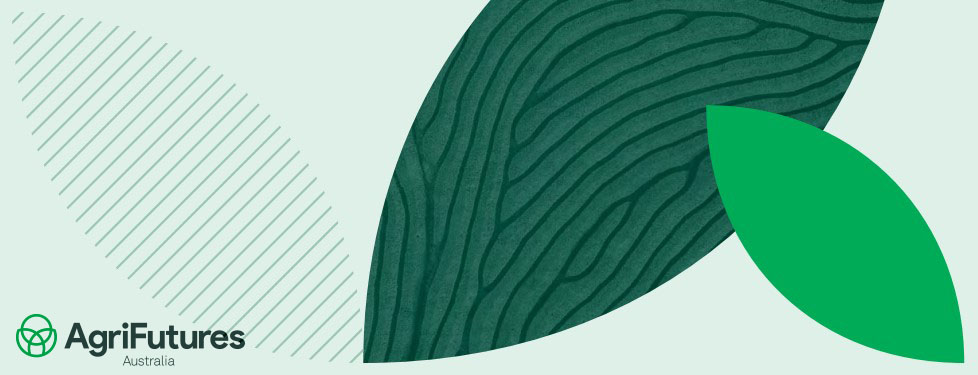
AgriFutures Honey Bee & Pollination Program has two exciting opportunities, don’t miss out!
AgriFutures Australia invites applications for the development and delivery of the Feasibility study – Commercial bee hive and honey traceability system.
The National Beehive Traceability System Feasibility Grant is a part of the Australian Trade System Support – Cultivating Australia’s Traceability – Promoting and Protecting Australian Premium Agriculture measure.
The aim of bee hive traceability is to enhance the preparedness of the honey bee industry for exotic bee pests, provide support for international trade and protect the pollination reliant industries from the impacts of an exotic bee pest incursion.
This project will conduct a feasibility study to understand the implications of implementing a national Australian commercial bee hive and honey traceability system and contribute to the improvement of the national biosecurity system and the resilience of Australian agriculture against pests and diseases. Project outcomes include:
Find out more: FEASABILITY STUDY
The AgriFutures Honey Bee & Pollination Program goal is to invest in RD&E that will secure a productive, sustainable and more profitable Australian beekeeping industry and secure pollination of Australia’s horticultural and agricultural crops. To ensure the Program goal is achieved, AgriFutures Australia is currently seeking research proposals to address targeted investment priorities outlined below.
As part of this Open Call, AgriFutures Australia is seeking research proposals that align with at least one of the priorities in the AgriFutures Honey Bee & Pollination Program RD&E Plan 2020-2025 OR proposals addressing at least one of the targeted activities to improve hive productivity outlined in the full Open Call document below.
This Open Call closes 12 noon (AEST) on Wednesday, 27 August 2025.
![]()

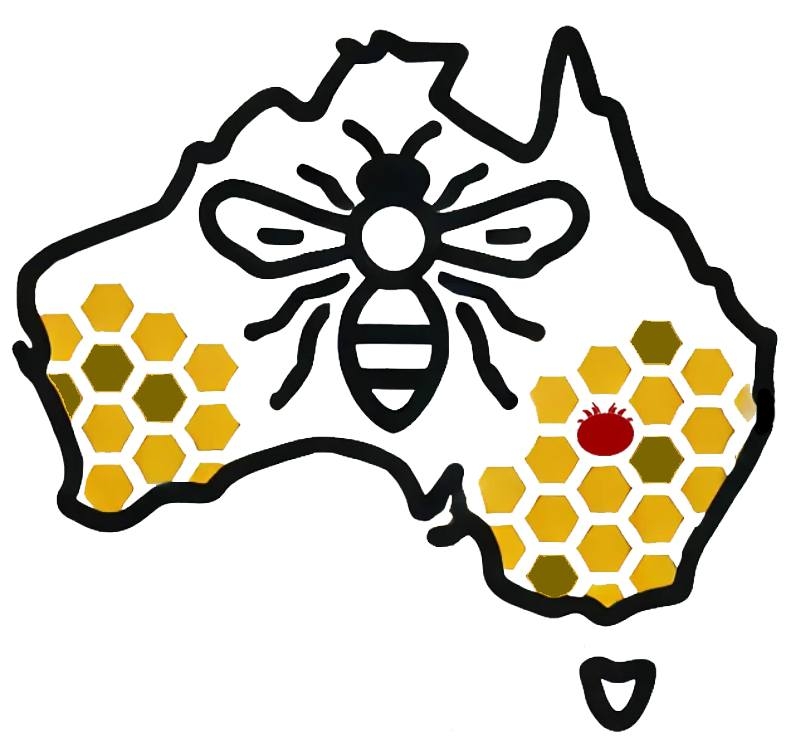
The Australian Colony Loss Survey team at the Australian National University (ANU) are working hard to bring the final report and the detailed results from Australia’s first ever Colony Loss Survey.
To have a sneak peak at the details so far and the promising information that Coloss has the potential to deliver, take a look at the recent AgriFutures Unearthed Podcast released this week to help us all to understand the reasons behind Coloss, how beekeepers can better understand that completing the survey is so important and some big comparisons between Australian’s overall losses and the rest of the world!
This episode of AgriFutures new look podcast Unearthed, delves into the hives of Australia’s European honeybee population and the impact of the varroa mite on both the beekeeping industry and the crops that depend on pollination. To help keep track of varroa’s spread, and stay ahead of emerging pests and disease challenges, an early warning system in the form of an annual Colony Loss Survey as been implemented as part of the National Varroa Transition to Management Program, managed by the Australian Honey Bee Industry Council with support from AgriFutures Honey Bee & Pollination Program. Find out what the first Col Loss survey has revealed about the health and threats to our hives on Unearthed: The people changing Australian agriculture.
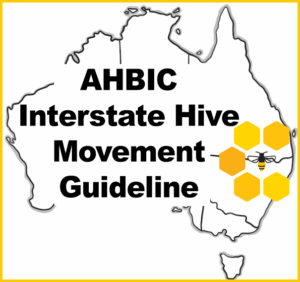
CLICK HERE OR ON IMAGES TO OPEN DOCUMENT IN PDF TO ACCESS ALL LINKS
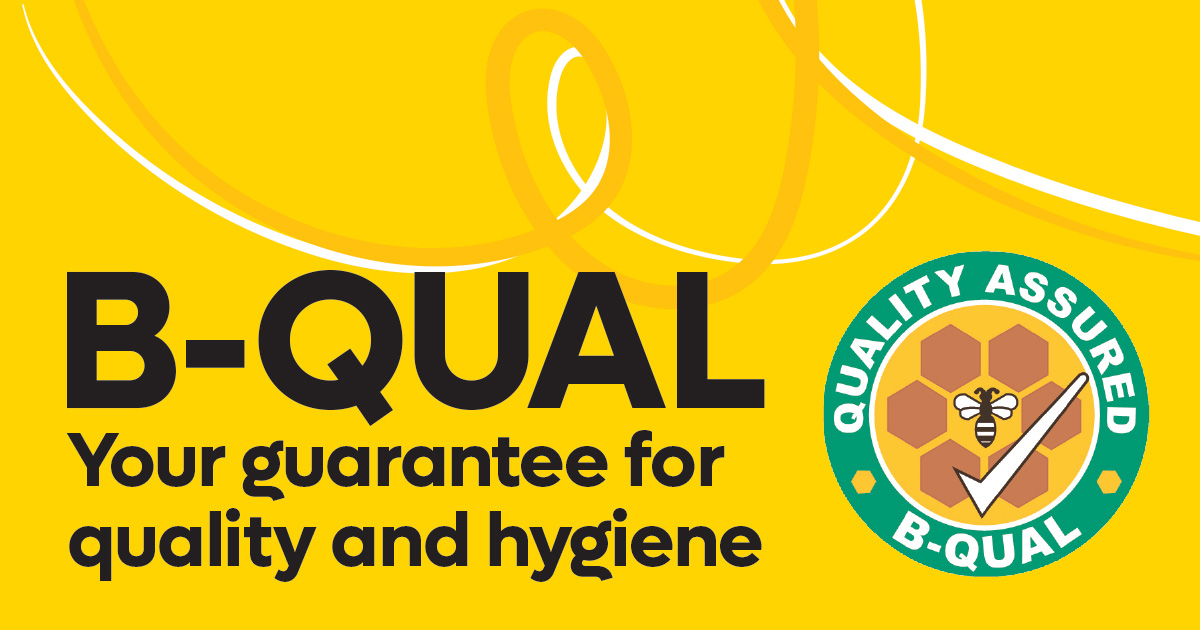
B-QUAL is an Industry Owned Quality Assurance System for Australian beekeepers.
How does B-QUAL certification benefit my business?
B-QUAL Certification also enables an enterprise to market its product under the B-QUAL logo to show that it meets the B-QUAL Industry Standards.
Complete your training at home at your own pace.
For more information and to obtain a Certification Information Pack, contact the B-QUAL Certification team.
www.bqual.com.au
B-QUAL Pty Ltd
Phone 07 49949820
Email: admin@bqual.com.au